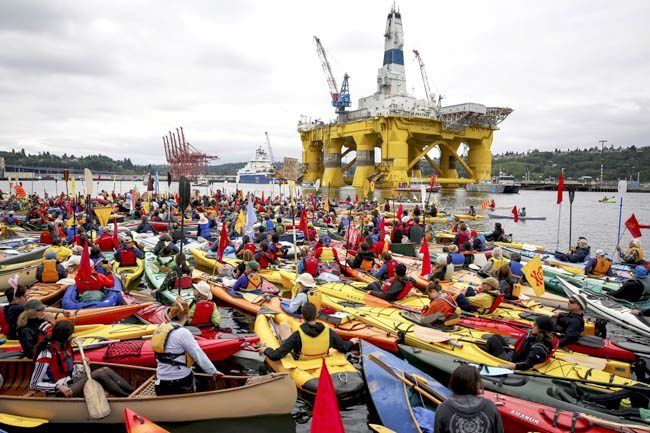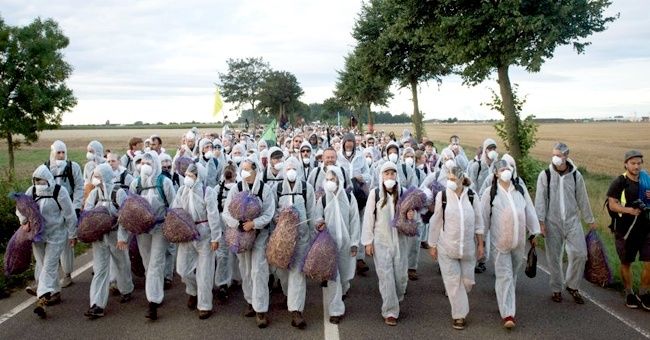


Which would be the summer of 2015, on two separate occasions. Early in the summer, on the West Coast of the U.S., “kayaktivists” in Seattle Harbor surrounded Shell Oil’s giant Polar Pioneer drilling rig, trying to keep it from getting out of the harbor. They didn’t succeed in that, of course—the Coast Guard cleared them out of the way—but they did succeed in reminding everyone of the scale of the destruction Shell has planned. The sight of those small, many kayaks against that one brute drilling platform brought home the existential nature of the struggle: it’s all of us, the little guys, against the immense, concentrated wealth and power of the biggest companies on Earth.

And then again earlier this month in Germany, at the amazing #EndeGelande protests, when more than a thousand activists managed to elude authorities and congregate inside Europe’s largest coal mine, in front of what are the world’s single largest terrestrial machines. (One, the Bagger 288 is so big it even has its own song). They sat there for most of the day, and the great machines could do no work—and that means, since they move 240,000 tons of coal a day, that a lot of coal was not mined.
But activists can’t stay there forever, and in the end it’s the picture that will do the company and the German government more damage. The Star Wars-like image of people standing in front of the Jurassic digger makes the same point of inhuman, absurd scale.

 233k
233k  41k
41k  Subscribe
Subscribe 
